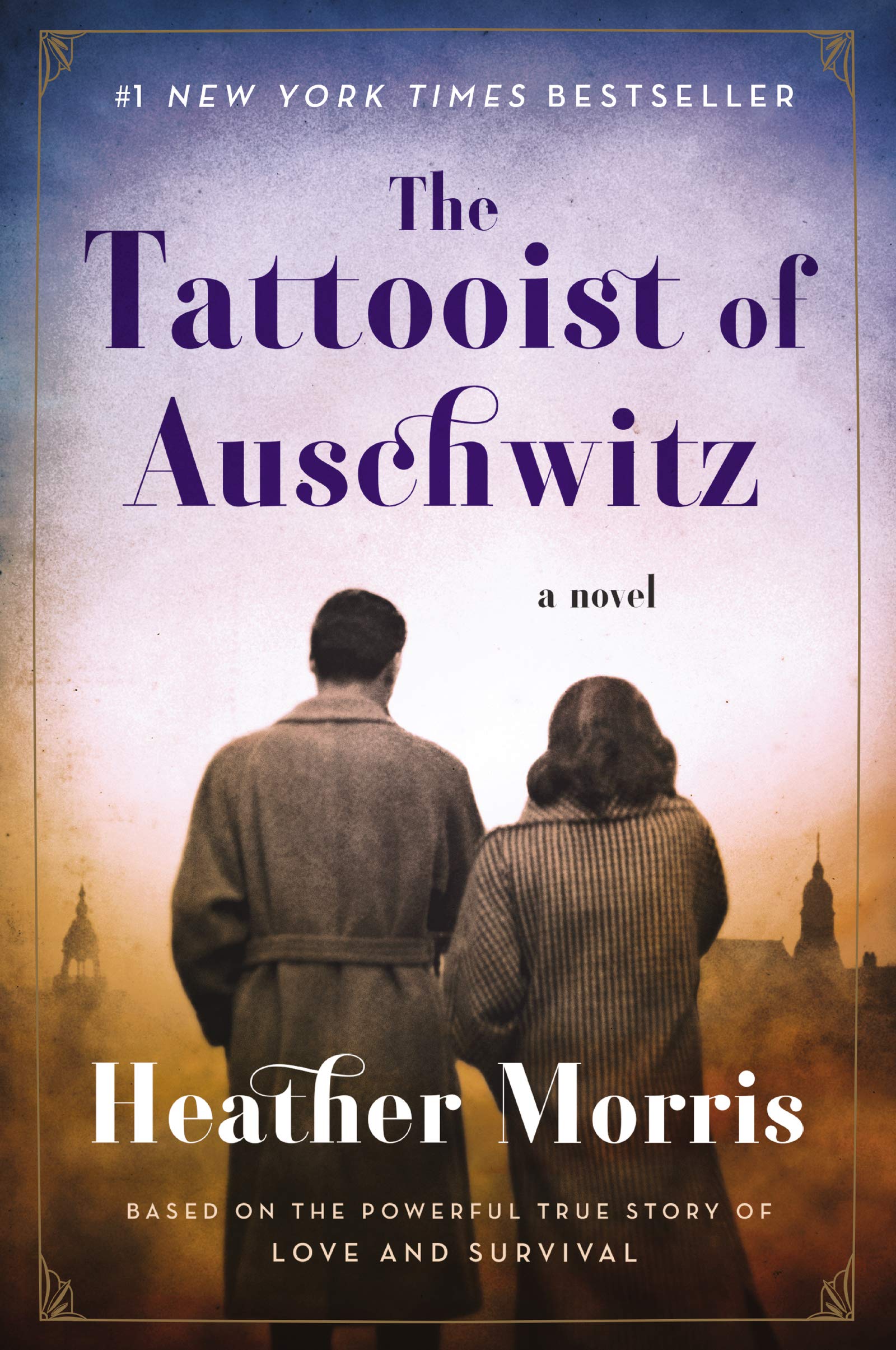The Tattooist of Auschwitz by Heather Morris
ARBEIT MACHT FREI:
The most cynical three words of the twentieth century
There are six million stories of one, single people group. Six million lives, murdered by ethnic prejudice, delusional fears, pathological hatred and political opportunism, total the horrific number of innocents condemned by a factory system emerging from a cistern of demented hubris. However, numbers are not lives. The bare number does not evoke experience; truth must be lived. Thus, daring and honest storytellers have recounted such tales to our consciousness and conscience to speak truth as living, and so readers can witness the touches of the humane in the darkest hours of the twentieth century. Each of the six million stories tells of a discrete life, but all must be counted one by one to bring us to six million.
The Tattooist of Auschwitz by Heather Morris is such a story, a biography of one man, a Slovak, who spent three years from April 1942 to April 1945 in the Auschwitz-Birkenau concentration camp in Poland. Lale, the central character, is taken from his hometown, Komprachy, Slovakia, hundreds of miles from, Bratislava, in April of 1942. He struggles for three years in that assembly-line hell, then, with a combination of personal strength, skills, and daring, and by fortunate coincidence survives. Years later, Heather Morris, recounts this young Jew’s journey from his hometown after the declaration of the Final Solution at the Wannsee Conference in January of 1942 to Melbourne, Australia. There, away from Europe, he and Gita, his love from the camp, are blessed to raise a son.
This book gets my recommendation. It is to be placed in the syllabus with The Diary of Anne Frank, The Boy in the Striped Pyjamas, and Man’s Search for Meaning. The tone and depth of this book would be very apt for a grade ten or eleven literature, history or civics class. The book is not a philosophical one or one that plumbs the nadir of the human shadow, but rather is a chronicle of a life for the living. Having a message of hope and ending of joy, it is a chronicle of a life with which we can identify, especially since the language and syntax are grounded in the vernacular of the common man or woman.
It is a stark topic; fortunately, however, the experiences of Lale are not written so darkly that a student would turn away and drop it. In the age of the Kardashians, reading by the young must be encouraged in an age-appropriate process. In fact, the gruesome experiences that I would have anticipated to be stark and unmitigated are present, but are ‘minimized’, as it were.
That being said, I judge the book to be honest. In the situation of the castration of Lale’s co-worker, we do meet the nefarious Dr. Mengele, such an aberration of the Hippocratic oath. We are informed of the crematoria and are presented stacks of bodies. Random suicides and murders take place. However, I believe, the author purposely chose not to horrify, but to bear witness discreetly to the moral strength and the skill for survival in Lale and his fellow inmates. The ambiguity of the human condition is shown from Lale’s beatings in the context of a paradoxical kindness, so limited by situation. Heather Morris refreshes us with the faith that this hell is incomplete; its absoluteness is condemned by rare moments of charity. The Nazi horror fails with moments of empathy, pity and love.
Therefore, I contend that this modification of monstrosity is an advantage when presenting the book to a particular audience, as I’ve suggested. As a high school teacher of humanities, this book would belong on my curriculum.
For any adult who is more knowledgeable about the Nazi context, background and history after readings and documentaries and being perhaps more capable of dealing with its extremes, there are more intense works of art. This book would serve admirably as an introduction to literature on this topic, leading to such books as Primo Levi’s If This is a Man. For the more profound, the drama God on Trial would give a deeply philosophical and theological debate on God by some male inmates in such a concentration camp in the depths of the genocide. However, these texts might be presented too soon to the young.
Some 40 years ago, I had the privilege of directing students in the dramatization of The Diary of Anne Frank. We were honoured to have a Holocaust survivor in the audience with other Jewish guests not associated with the school. The drama was not an abstract. By engaging young actors in works of this significance while not overwhelming them in possible despair of the human condition, much can be done to stimulate those empathy genes. However, as adults we must tread carefully. Along with that famous play, this particular book occupies a very significant place in the early process of moral education.
This novel is an exercise in hope, for we dread, fear, root, hope for this young man through the 250 pages of his ‘to hell and back’ story. So, at the end, we are moved when he rediscover his love back in Slovakia. I guarantee that all young readers will explode with relief at the conclusion.
Lale sweeps Gita up into his rms and kisses her. One of Gita’s friends comes over and leads the horse away. Then, with Gita’s arms around Lale’s waist and her head resting on his shoulder, they walk into the crowded street, one young couple among many is a war-ravaged city.
Sorry about the spoiler, but it’s not about the ending; it’s the journey to recapture the joy of the ordinary, so deserved.
